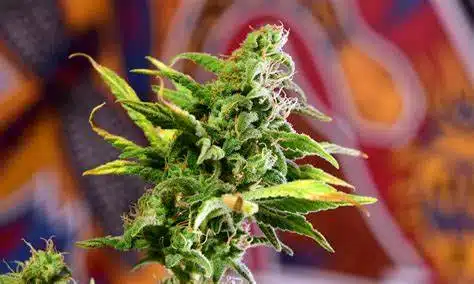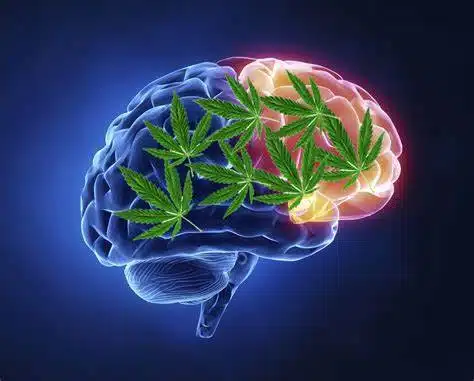Chronic Inflammation: Weed As A Cure

Chronic Inflammation: Weed As A Cure
Chronic inflammation is a condition that affects millions of people worldwide. It can lead to various health issues, including pain, swelling, and reduced mobility. While there are several treatment options available, many individuals are turning to alternative remedies like weed to alleviate their symptoms. In this article, we will explore the potential of weed as a cure for chronic inflammation and discuss its benefits, usage, and effectiveness.
The Benefits of Weed for Chronic Inflammation
Weed, also known as cannabis or marijuana, contains compounds called cannabinoids that have been found to possess anti-inflammatory properties. These cannabinoids, such as THC and CBD, interact with the body’s endocannabinoid system, which plays a crucial role in regulating inflammation. By targeting specific receptors in the body, weed can help reduce inflammation and provide relief for individuals suffering from chronic inflammatory conditions.
Understanding THC and CBD
THC (tetrahydrocannabinol) and CBD (cannabidiol) are two of the most well-known cannabinoids found in weed. THC is responsible for the psychoactive effects commonly associated with marijuana, while CBD is non-psychoactive and has gained popularity for its potential therapeutic benefits. Both THC and CBD have shown promise in reducing inflammation and managing chronic pain.
Different Ways to Consume Weed for Inflammation Relief
There are various methods of consuming weed for inflammation relief, each with its own advantages and considerations. Some popular options include:
-
Smoking: Smoking weed involves inhaling the smoke produced by burning the dried flowers or buds. This method provides quick relief but may not be suitable for individuals with respiratory issues.
-
Vaping: Vaping involves heating the weed at a lower temperature, which produces a vapor that is inhaled. This method is considered to be less harmful to the lungs compared to smoking.
-
Edibles: Edibles are food products infused with weed extracts. They offer a discreet and long-lasting effect, but the onset of relief may be slower compared to smoking or vaping.
-
Tinctures: Tinctures are liquid extracts of weed that are typically taken orally. They are easy to use and allow for precise dosage control.
-
Topicals: Topical products infused with weed extracts, such as creams or balms, can be applied directly to the affected area for localized relief.
Choosing the Right Strain for Inflammation Relief
When using weed for chronic inflammation, it is important to choose the right strain that suits your needs. Different strains have varying levels of THC and CBD, as well as other compounds that contribute to their unique effects. Some strains that are commonly recommended for inflammation relief include:
-
ACDC: This strain is known for its high CBD content and low THC levels, making it a popular choice for individuals seeking anti-inflammatory benefits without the psychoactive effects.
-
Harlequin: Harlequin is another strain with a balanced CBD to THC ratio, providing a mild and uplifting experience while offering potential relief from inflammation.
-
Blueberry: Blueberry is an indica-dominant strain that is known for its relaxing and pain-relieving properties. It may be beneficial for individuals experiencing chronic pain due to inflammation.
-
Pineapple Express: Pineapple Express is a hybrid strain that combines the effects of both sativa and indica. It may provide a balanced experience while potentially reducing inflammation.
Best Practices for Using Weed for Inflammation Relief
While weed can offer relief for chronic inflammation, it is essential to follow best practices to ensure safe and effective usage. Here are some tips to consider:
-
Start with low doses: Begin with a low dose and gradually increase it as needed. This allows you to gauge your tolerance and find the optimal dosage for your symptoms.
-
Consult a healthcare professional: If you are considering using weed for inflammation relief, it is advisable to consult with a healthcare professional who is knowledgeable about cannabis medicine. They can provide guidance tailored to your specific condition and help you make informed decisions.
-
Consider the THC to CBD ratio: Depending on your preferences and needs, you may want to choose a strain with a higher CBD content or a balanced THC to CBD ratio. Experimenting with different strains can help you find the right balance for your symptoms.
-
Be aware of potential side effects: While weed is generally well-tolerated, it can cause side effects such as dry mouth, dizziness, and increased heart rate. Monitor your body’s response and adjust your usage accordingly.
-
Purchase from a reputable source: To ensure quality and safety, it is important to buy weed from a reputable online dispensary like Ganja West Online Dispensary. They offer a wide range of products, including concentrates, edibles, vapes, and more, all delivered conveniently to your doorstep.
Prevalence of Chronic Inflammation
Chronic inflammation is prevalent for several reasons, including:
-
Lifestyle factors: Poor diet, lack of exercise, and high stress levels can contribute to chronic inflammation. Consuming processed foods, excessive sugar, and unhealthy fats can trigger an inflammatory response in the body.
-
Obesity: Excess body weight can lead to chronic low-grade inflammation. Fat cells release inflammatory chemicals that can disrupt the body’s normal inflammatory response.
-
Smoking: Smoking cigarettes or exposure to secondhand smoke can cause chronic inflammation in the lungs and other parts of the body.
-
Environmental factors: Exposure to pollutants, toxins, and certain chemicals can trigger chronic inflammation. This includes air pollution, pesticides, and industrial chemicals.
-
Chronic infections: Persistent infections, such as gum disease or hepatitis, can lead to chronic inflammation as the immune system continuously responds to the infection.
-
Autoimmune disorders: Conditions like rheumatoid arthritis, lupus, and inflammatory bowel disease involve an overactive immune response, leading to chronic inflammation.
-
Aging: As we age, our bodies may experience a gradual increase in inflammation. This is known as inflammaging and is thought to contribute to age-related diseases.
-
Genetic factors: Some individuals may have genetic variations that make them more susceptible to chronic inflammation.
It’s important to note that chronic inflammation can have serious health consequences, as it has been linked to various diseases, including heart disease, diabetes, cancer, and neurodegenerative disorders. Managing chronic inflammation through lifestyle changes, such as adopting a healthy diet, regular exercise, stress reduction, and avoiding smoking, can help reduce the prevalence and impact of chronic inflammation.
The Benefits of Weed for Chronic Pain
Weed, also known as cannabis or marijuana, has been used for centuries for its medicinal properties. It contains compounds called cannabinoids, such as THC and CBD, which interact with the body’s endocannabinoid system to provide pain relief. These cannabinoids have shown promise in reducing inflammation, alleviating neuropathic pain, and improving overall pain management. By making weed more accessible, individuals suffering from chronic pain can explore its potential benefits as a part of their treatment plan.
Barriers to Accessibility:
-
Legal Restrictions: One of the primary barriers to accessing weed for chronic pain treatment is the legal restrictions surrounding its use. In many countries and states, marijuana is classified as a controlled substance, making it difficult for patients to obtain it legally. However, there has been a growing recognition of its medicinal value, leading to the legalization of medical marijuana in several regions.
-
Lack of Medical Professionals’ Knowledge: Another challenge is the limited knowledge and understanding of medical professionals regarding the use of weed for chronic pain. Many healthcare providers may not be familiar with the research and evidence supporting its efficacy, leading to hesitation in recommending it as a treatment option. Increasing education and awareness among medical professionals can help bridge this gap and improve accessibility.
-
Limited Availability of Medical Marijuana Dispensaries: Even in regions where medical marijuana is legal, the availability of dispensaries can be limited. This can pose a significant challenge for patients, especially those living in rural areas or regions without nearby dispensaries. Increasing the number of dispensaries and ensuring their accessibility to patients can help improve access to weed for chronic pain treatment.
-
Affordability: The cost of medical marijuana can be a significant barrier for many individuals, especially those without insurance coverage. The high cost of production, regulation, and taxation can make it unaffordable for some patients who could benefit from its use. Implementing policies to make medical marijuana more affordable, such as reducing taxes or providing subsidies, can help improve accessibility.
Solutions for Improving Accessibility
-
Legalization and Regulation: Governments can play a crucial role in improving accessibility by legalizing medical marijuana and implementing appropriate regulations. This can ensure that patients have legal access to quality-controlled products and can obtain them from licensed dispensaries.
-
Education and Training for Medical Professionals: Increasing education and training for medical professionals regarding the use of weed for chronic pain can help improve their knowledge and confidence in recommending it as a treatment option. This can be achieved through continuing medical education programs, conferences, and research initiatives.
-
Expansion of Medical Marijuana Dispensaries: Governments and regulatory bodies can work towards expanding the number of medical marijuana dispensaries, particularly in underserved areas. This can be achieved by streamlining the licensing process, providing incentives for businesses to open dispensaries, and ensuring equitable distribution across regions.
-
Affordability Programs: Implementing affordability programs, such as reduced taxes or subsidies for low-income patients, can help make medical marijuana more accessible. These programs can ensure that cost does not become a barrier for patients who could benefit from its use.
-
Telemedicine and Online Platforms: Utilizing telemedicine and online platforms can help overcome geographical barriers and improve access to medical marijuana consultations. Patients can consult with healthcare professionals remotely, receive prescriptions, and have their medical marijuana delivered to their doorstep, ensuring accessibility regardless of their location.
Making weed more accessible for treating chronic pain is crucial for improving the quality of life for individuals suffering from this debilitating condition. By addressing legal restrictions, increasing education among medical professionals, expanding the availability of dispensaries, and implementing affordability programs, we can overcome the barriers to accessibility. It is essential for governments, regulatory bodies, healthcare professionals, and patients to work together to ensure that individuals have safe and legal access to weed as a part of their chronic pain management. By doing so, we can harness the potential benefits of weed and provide relief to those in need.
Why is Chronic Pain So Common?
Chronic pain is a common condition that affects millions of people worldwide. There are several reasons why chronic pain is so prevalent:
-
Underlying Medical Conditions: Chronic pain often arises as a symptom of an underlying medical condition. Conditions such as arthritis, fibromyalgia, neuropathy, migraines, and back pain can all lead to chronic pain. These conditions may be caused by factors such as inflammation, nerve damage, or structural abnormalities.
-
Aging Population: As the global population continues to age, the prevalence of chronic pain increases. Older adults are more likely to develop chronic conditions such as osteoarthritis, degenerative disc disease, and other age-related ailments that can cause persistent pain.
-
Sedentary Lifestyle: Modern lifestyles often involve long periods of sitting or inactivity, which can contribute to muscle imbalances, poor posture, and weakened core muscles. These factors can lead to chronic pain, particularly in the back, neck, and joints.
-
Injury and Trauma: Accidents, sports injuries, and trauma can result in chronic pain. In some cases, the initial injury may heal, but the pain persists due to nerve damage or changes in the central nervous system.
-
Psychological Factors: Chronic pain can be influenced by psychological factors such as stress, anxiety, and depression. These conditions can amplify pain perception and make it more difficult to manage.
-
Genetic Predisposition: Some individuals may have a genetic predisposition to developing chronic pain conditions. Certain genetic variations can affect pain processing and sensitivity, making individuals more susceptible to chronic pain.
-
Lifestyle Factors: Unhealthy lifestyle choices, such as poor diet, lack of exercise, and smoking, can contribute to chronic pain. These factors can lead to inflammation, weight gain, and reduced overall physical health, all of which can increase the risk of chronic pain.
-
Environmental Factors: Environmental factors, such as exposure to pollutants, toxins, and certain chemicals, can contribute to chronic pain. For example, occupational exposure to repetitive motions or hazardous substances can lead to chronic pain conditions like carpal tunnel syndrome or chemical-induced neuropathy.
It is important to note that chronic pain is a complex and multifaceted condition, and the causes can vary from person to person. Effective management of chronic pain often requires a comprehensive approach that addresses the underlying causes, incorporates lifestyle modifications, and utilizes appropriate medical interventions.
Conclusion
Weed has shown promise as a potential cure for chronic inflammation, offering relief for individuals suffering from this condition. With its anti-inflammatory properties and various consumption methods, weed can be a valuable addition to your treatment plan. However, it is crucial to approach its usage responsibly, consult with healthcare professionals, and choose the right strains and products for your specific needs. By following best practices and considering reputable sources like Ganja West Online Dispensary, you can explore the potential benefits of weed for chronic inflammation and improve your overall well-being. If you are interested in buying weed online and THC products, check out Ganja West online weed dispensary and shop for your weed online and cannabis products at ganjawest.co!












